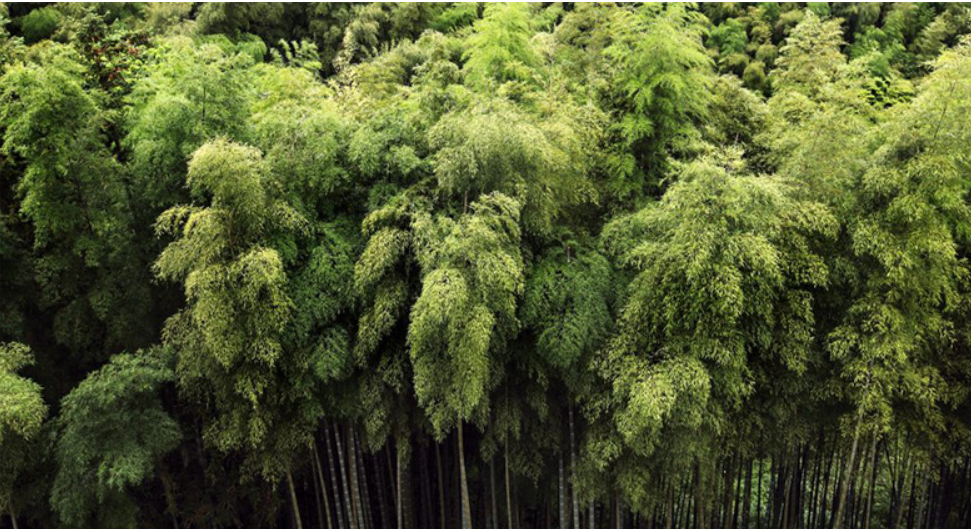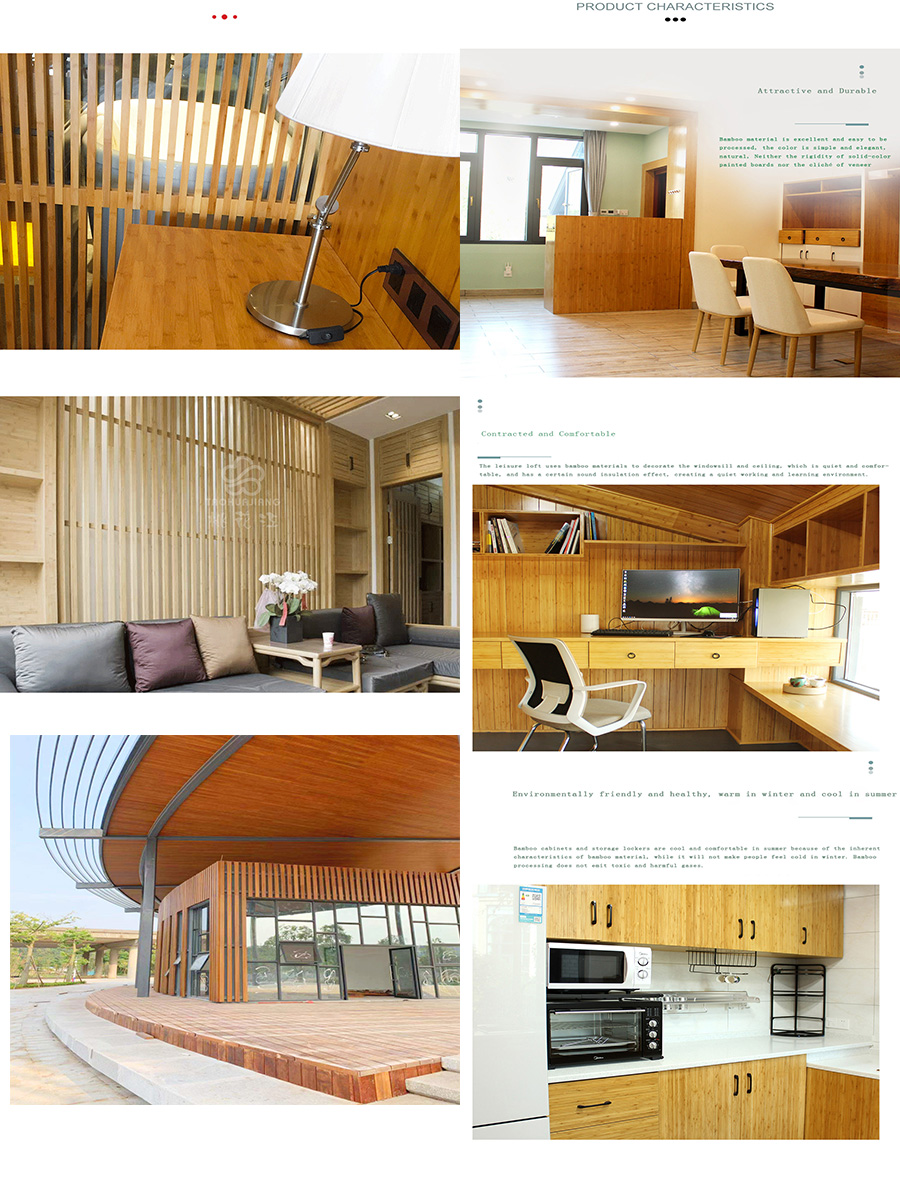China has a long history of bamboo culture. From bamboo slips, bamboo papers and Musical Instruments to today's flooring and bamboo fiber products, bamboo plays a very important role in daily life. Chinese people also show special preference to bamboo, it has been given many accolades that inclu
China has a long history of bamboo culture. From bamboo slips, bamboo papers and Musical Instruments to today's flooring and bamboo fiber products, bamboo plays a very important role in daily life. Chinese people also show special preference to bamboo, it has been given many accolades that including bamboo, pine and plum are called “three friends in cold winter", and another praise is bamboo, plum, orchid, and chrysanthemum are called "the four gentleman in flowers". In the 21st century, bamboo will take on a new mission -- to fight climate change. Bamboo has the advantages of one planting and sustainable utilization, which also has great potential in mitigating climate change, energy conservation and emission reduction. Dr. Fu Jinhe, director of the East African Office of the International Bamboo and Rattan Organization, told Life Times.
Carbon sequestration plays a big role in reducing emissions
Bamboo is the fastest growing plant in the world and makes two important contributions to energy conservation and emission reduction." Fu Jinhe said. Initially, bamboo growth can fix CO2 in the air, while reducing the total amount of carbon dioxide in the atmosphere. It only takes 2 to 3 months from bamboo shoots to maturity bamboo with an average height of 10 to 30 meters, which has great potential for carbon sequestration. Moreover, the carbon sequestration effect of bamboo is far more than trees. Generally, trees need to be grown for at least ten years before they can be cut, but bamboo is ready to be cut in four to six years. One study estimated that a hectare of bamboo and its products could store 306 tonnes of carbon over 60 years, compared with 178 tonnes for a hectare of Chinese fir forest.
Secondly, Bamboo is made into daily necessities that it can stabilize carbon storage and prevent its release into nature rapidly. Bamboo is made into durable crafts, flooring, building materials etc which can store large amounts of carbon. In terms of carbon sequestration processes, bamboo has a negative carbon footprint compared to conventional building materials such as steel and plastic (picture as follows). That is to say, Bamboo products not only do not releasing carbon dioxide into the atmosphere, but also it is reduce CO2 in the atmosphere. furthermore, the more bamboo is used, the greater its contribution to mitigating global climate change to which compared with other high-emission building materials.

Bamboo can be used for food, clothing, shelter and transportation
Bamboo also has great potential for everyday applications. One thousand years ago, Su Dongpo said that's what bamboo is all about : "eater bamboo shoots, living bamboo tiles, carrying bamboo rafts, cooking bamboo firewood, clothing bamboo leather, bamboo paper for books, the shoes is bamboo shoes , it can be said that one day without this gentleman ." Fu Jinhe said bamboo branches, leaves, roots, stems and bamboo shoots which can be processed and used. Take moso bamboo as an example, bamboo shoots are edible, while the most sturdy and thick pole can be made into floors and furniture; The upper relatively thin rod can be made of bamboo weaving, chopsticks, toothpicks; Bamboo sticks can be used as brooms; Bamboo leaves can be refined bamboo leaf flavonoids; The remaining bamboo roots and processing waste can be burned into bamboo charcoal. According to statistics, bamboo has more than 10,000 uses in terms of food, clothing, shelter and transportation.
Nowadays, bamboo is known as "plant steel". After technological processing, bamboo products have been able to replace wood and other energy-intensive raw materials in many fields. For example, in 2009, the International Bamboo and Rattan Organization cooperated with Professor Xiao Yan's research group of Hunan University to build a bamboo structure villa in Beijing's Zizhuyuan Park of which the columns, beams and walls are all made by bamboo. In 2003, the third terminal of Madrid International Airport in Spain was built with bamboo ceiling, with a total area of 230,000 square meters. While the fire rating is up to the European Union M1 fire standard (M1 is inflammable material level). But Fu Jinhe says, in general, it is not board enough that we use baboo.

Development and utilization must be supported
The exploitation and utilization of bamboo forest will not damage the ecology to compared with trees. A bamboo forest usually contains bamboos of different ages, and mature bamboos are selected for cutting. As a result, only one fifth or one third of bamboo forest is usually harvested. The whole harvesting process does not influence the growth of other bamboos, and has little impact on the ecosystem. It will not damage the ecosystem function of bamboo forest and wildlife habitat. A bamboo forest, which grows new bamboo every year, they can be running for decades or even centuries if properly maintained. Some of the bamboo forests in our country have been growing for thousands of years and are still being developed and used.
Fu Jinhe introduced that China is a large bamboo country with abundant bamboo resources. There are more than 1600 species of bamboo plants in the world, which covering more than 45 million hectares. There are 43 genera and 652 species of bamboo in China, while covering an area of 6.41 million hectares, including 4.68 million hectares of Moso bamboo. It is estimated that the carbon fixed by bamboo vegetation, soil and litter in China's bamboo forest ecosystem which accounts for 5.1 percent of China's total forest carbon storage. In addition, with the rapid increase in forest area around the world, the global bamboo forests are expanding at an annual rate of 3%, which means that bamboo forests are playing an increasingly important role.
